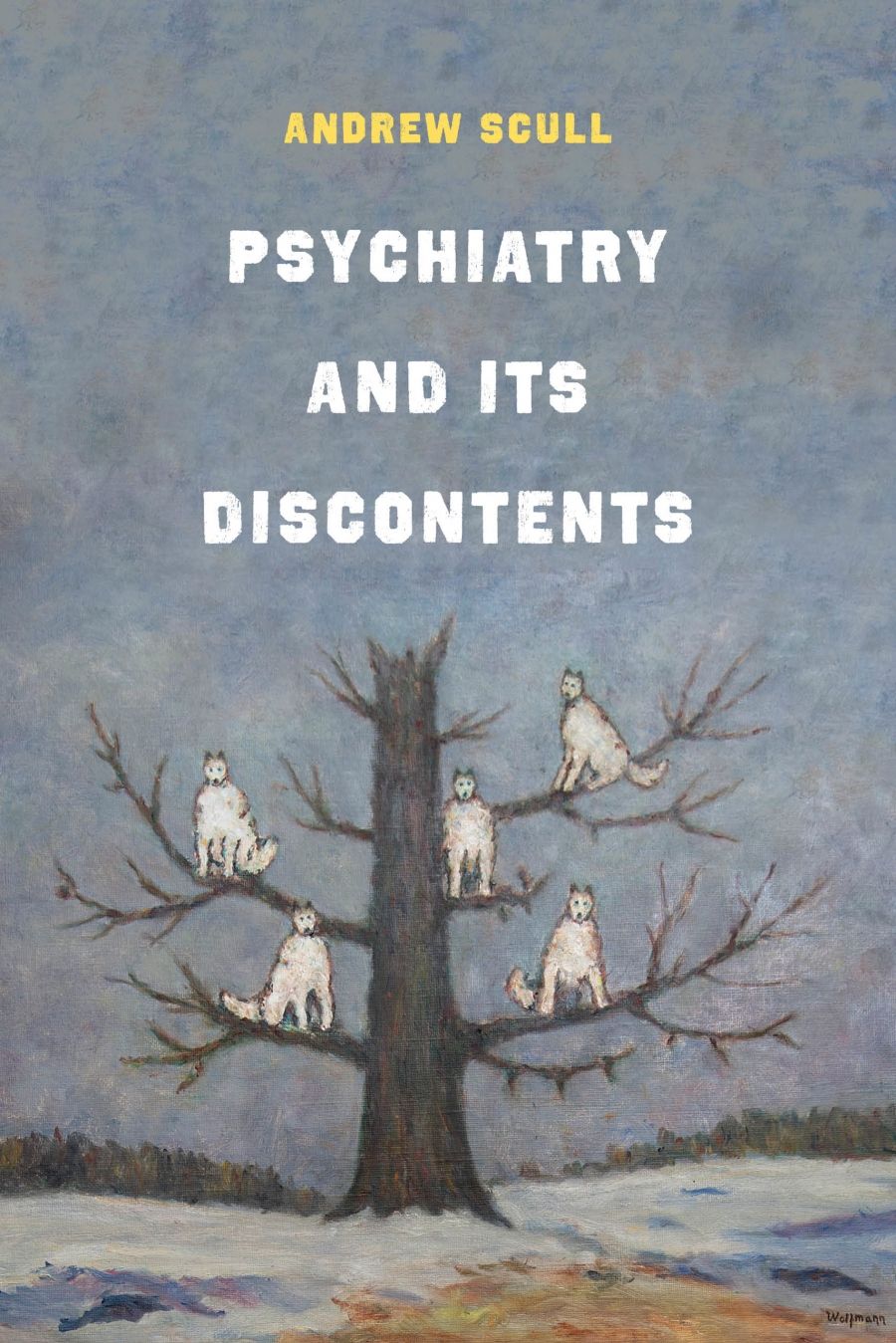
- Free Article: No
- Contents Category: Psychiatry
- Review Article: Yes
- Online Only: No
- Custom Highlight Text:
Madness ‘haunts all of our imaginations’, writes Andrew Scull in Psychiatry and Its Discontents, but it is more than a nightmare. Each year, one in five Australians will experience mental illness, according to the Black Dog Institute, and the World Health Organization warns that one in four globally will experience a mental or neurological disorder during their lifetime. The essays gathered here, however, raise grave doubts about the psychiatric knowledge and practice upon which these epidemiologies are based.
- Grid Image (300px * 250px):

- Book 1 Title: Psychiatry and its Discontents
- Book 1 Biblio: University of California Press (Footprint), $59.99 hb, 376 pp
Sometimes the repetition is jarring. The emperor, Scull tells us on several occasions, has no clothes. The metaphor is never properly articulated, but it seems to imply that psychiatry has been parading through the streets of the mind and the brain for a century or more without therapeutic benefit or scientific substance, and that everyone has learned to look elsewhere and say nothing. This would make Scull the child who simply sees, in another phrase Scull likes, wie die Dinge sind – how things are.
It’s an attractive conceit, but if it is true that psychiatry is under-dressed or even, as the fable implies, not entirely rational, Scull is far from a gormless child. His writing combines the structural curiosity of the sociologist with the historian’s quizzical eye and interest in causation. Scull’s significant corpus in the history of madness ranges from the rise of the asylum and psychiatry’s slow, fitful emergence under its eaves to a magisterial study of madness in world civilisations. It provides necessary ballast for the volume’s freewheeling adventurism. There is a sixteen-page study of institutional solutions for mental illness, from the Byzantine hospital to the blithe late twentieth-century shift to ‘community care’; a meticulous demolition of Foucault’s ‘great confinement’ and other ‘fictions’; an excursus on faith and mental health; an unflinching account of rival lobotomists demonstrating their craft.
After the longer-range essays of the first part, the remainder of the book focuses on the twentieth-century sciences of the mind. Review essays trace the ‘defenestration’ (another of Scull’s favoured terms) of Freudian psychodynamics, clumsy and brutal experiments in psychosurgery, the inflated claims of neuropsychiatry, the delineation of post-traumatic stress disorder, and recent enthusiasm for neural imaging technology as a window into the mind. Most are caustic corrections of psychiatric overreach.
Interspersed through these reviews are longer chapters revised from academic articles. There is a fascinating gendered study of two acolytes of leading American academician Adolf Meyer (‘an eclectic,’ writes Scull, ‘who hid the barrenness of his doctrines behind a fog of verbal obscurantism that he summed up as “psychobiology”’). One excelled in biological experiments and technologies, and the other became one of the most prominent psychoanalysts in the country. There is an essay on the Rockefeller Foundation’s enormous injection of funds into academic psychiatry in the 1930s and 1940s, and a revealing study of the century-long competition of psychology, psychiatry, and psychoanalysis for funds, patients, and dignity.
But the last essay in the collection, ‘Delusions of Progress’, brings out the full measure of Scull’s discontent. It outlines the perilous state of contemporary psychiatry by comparing two comprehensive attacks on the field written from opposing theoretical positions. Gary Greenberg’s The Book of Woe: The DSM and the unmaking of psychiatry (2013) is highly critical of psychiatry’s bullish embrace of neurobiology, and holds that the medical model of mental illness is a category error, while neuropsychiatrist Michael Alan Taylor’s Hippocrates Cried: The decline of American psychiatry (2013) argues that mental illness has no meaning and that psychotherapy is baseless and often harmful. Psychological symptoms are simply signposts, writes Taylor, to disordered brains.
Both Greenberg and Taylor reject the prevailing ‘descriptive psychiatry’, encapsulated in the fabled DSM. Its ascendancy began with the third edition, a strategic response to a series of comparative studies that found that psychiatrists studying similar symptoms were producing an embarrassing range of diagnoses. DSM, argues Scull, ejected the Freudian neuroses and psychoses of the earlier manuals, but also their vague efforts to outline causation. It was a supposedly biological psychiatry without any firm foundation in biology, and yet its more regular and reliable diagnoses were of great use to Big Pharma, the insurance industry, and families looking to access desperately needed assistance. Descriptive psychiatry gained widespread professional and popular support, and yet, writes Scull, the DSM is a ‘disaster’, and the psychiatry based upon it ‘a rickety, unsafe, unscientific enterprise’.
Andrew Scull leaves his readers with this vision, which he has conjured from many vantage points, with careful scholarship and sharp prose: psychiatry as a palatial house of cards, quivering in the wind.


Comments powered by CComment